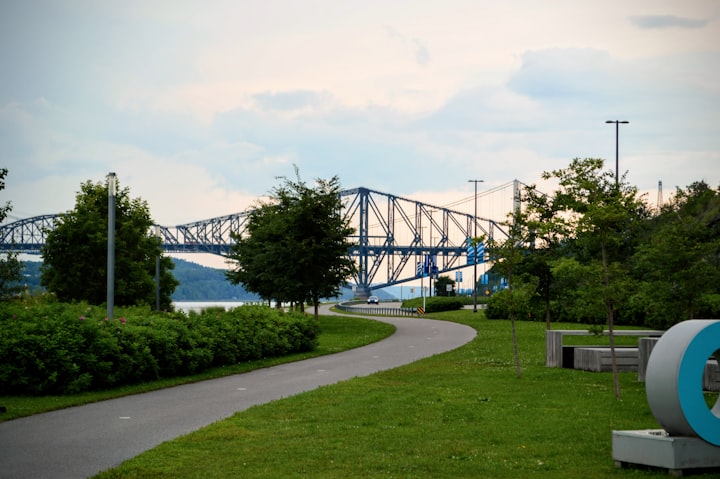Urban Planning and Green Infrastructure
Building Sustainable Cities: Integrating Green Spaces and Public Transit

Green spaces and nature-based solutions play a critical role in shaping sustainable cities of the future. Integrating green infrastructure, such as urban parks, rooftop gardens, and green corridors, enhances biodiversity, promotes physical and mental well-being, and mitigates the effects of climate change.
sustainable urban development involves creating cities that strike a delicate balance between economic growth, environmental protection, and social equity. This approach acknowledges that a city is an intricate system with interdependent elements, and progress in one area should not come at the expense of others. By embracing sustainability, cities aim to minimize their ecological footprint, ensure equitable access to resources and opportunities, and enhance the quality of life for all residents.
Sustainable urban development is not just about protecting the environment; it also encompasses social and economic aspects. It recognizes that cities are dynamic and constantly evolving, and therefore, it is essential to plan for the long term and consider the needs of future generations.
One of the key principles of sustainable urban development is the concept of resilience. Sustainable cities are designed to withstand and adapt to various challenges, such as natural disasters and climate change. By incorporating resilience into their planning processes, cities can ensure the safety and well-being of their residents even in the face of adversity.
Key Elements and Principles of Sustainable Cities
To realize the vision of sustainable cities, a holistic approach is essential. Urban planning and smart city solutions play a pivotal role in guiding the development process. By adopting innovative design strategies, cities can optimize resource use, reduce pollution, and enhance overall environmental sustainability.
Additionally, cities must integrate green spaces, walkable neighborhoods, and reliable public transportation systems, fostering a sense of community and promoting health and well-being among residents. These elements not only improve the quality of life but also reduce the reliance on private vehicles, leading to reduced traffic congestion and air pollution.
Successful sustainable cities are those that prioritize the efficient management of resources, such as energy and water, while also embracing renewable energy sources. By investing in renewable energy infrastructure and implementing energy-efficient technologies, cities can reduce their carbon emissions and mitigate the impact of climate change.
Sustainable cities prioritize social equity, ensuring that all residents have access to affordable housing, healthcare, education, and employment opportunities. By addressing socioeconomic disparities within urban settings, these cities aim to create inclusive communities where everyone can thrive.
The Role of Urban Planning and Smart City Solutions
Urban planning plays a critical role in shaping sustainable cities. By carefully designing urban spaces, incorporating green infrastructure, and leveraging technology, planners can create cities that are adaptable to future challenges and provide a high quality of life for residents.
Smart city solutions, such as efficient waste management systems, smart grid networks, and digital platforms for citizen engagement, enable cities to optimize resource allocation, enhance service delivery, and foster innovation. These technologies allow for better monitoring and management of urban systems, leading to more efficient use of resources and improved quality of life for residents.
Integrating Environmental Sustainability in City Design
When designing sustainable cities, it is essential to integrate environmental sustainability at every stage of the process. This involves incorporating green building practices, utilizing sustainable materials, and implementing urban design strategies that promote energy efficiency and minimize waste.
Cities can adopt nature-based solutions, such as green roofs, urban gardens, and urban forests, to enhance biodiversity, improve air quality, and mitigate the urban heat island effect. These green spaces not only provide environmental benefits but also contribute to the well-being of residents by creating peaceful and relaxing areas within the city.
Certainly! Urban planning plays a crucial role in promoting sustainability and mitigating environmental impacts in cities. Here's a deeper exploration of how cities can be designed and managed to achieve these goals:
1. **Green Spaces and Urban Parks**: Incorporating green spaces like parks, community gardens, and urban forests into urban planning helps to improve air quality, reduce urban heat island effects, and provide recreational spaces for residents. These areas also support biodiversity and can act as carbon sinks, mitigating the impacts of climate change.
2. **Public Transportation**: Prioritizing public transportation systems, such as buses, trains, and subways, reduces the reliance on private vehicles, which contribute significantly to air pollution and greenhouse gas emissions. Efficient and accessible public transit networks can also reduce traffic congestion, improve mobility for all residents, and promote social equity.
3. **Active Transportation Infrastructure**: Designing cities with infrastructure for walking, cycling, and other forms of active transportation encourages physical activity, reduces reliance on cars, and decreases carbon emissions. This includes building bike lanes, pedestrian-friendly sidewalks, and safe crossings, as well as providing amenities like bike-sharing programs and bike racks.
4. **Compact and Mixed-Use Development**: Encouraging compact, mixed-use development patterns where residential, commercial, and recreational areas are integrated within neighborhoods reduces urban sprawl and the need for long commutes. This not only conserves land and natural habitats but also promotes vibrant, walkable communities where residents have access to amenities and services within close proximity.
5. **Energy-Efficient Buildings**: Implementing building codes and standards that promote energy efficiency and sustainable design practices in construction helps to reduce energy consumption and greenhouse gas emissions. Features such as passive solar design, efficient insulation, green roofs, and renewable energy systems can lower operating costs for buildings while minimizing their environmental footprint.
About the Creator
Reader insights
Nice work
Very well written. Keep up the good work!
Top insights
Excellent storytelling
Original narrative & well developed characters
Expert insights and opinions
Arguments were carefully researched and presented






Comments
There are no comments for this story
Be the first to respond and start the conversation.